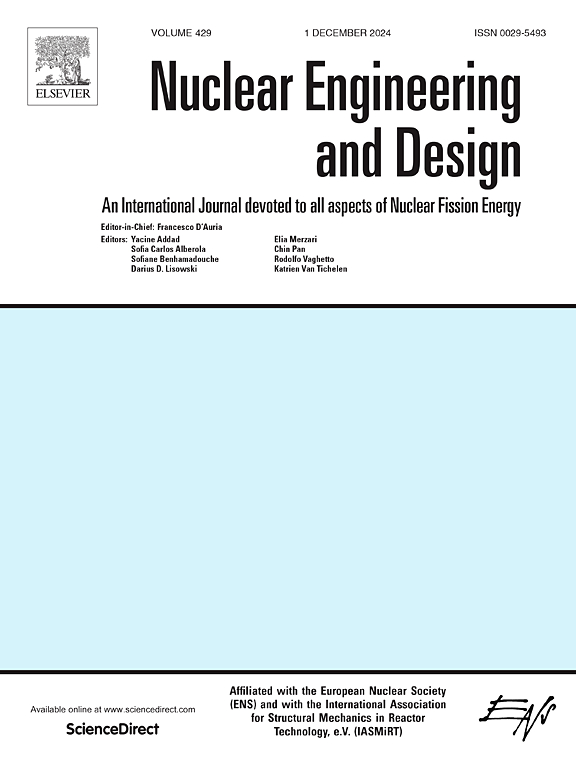Gen-IV pool reactors: Validation of sloshing CFD modelling and behavior under large seismic events
IF 1.9
3区 工程技术
Q1 NUCLEAR SCIENCE & TECHNOLOGY
引用次数: 0
Abstract
This paper addresses one aspect of the safety of compact lead-cooled pool fast reactors. Under a seismic event, there is concern that the surface sloshing could compromise the integrity of some structures or components. We investigate this issue by means of computational modelling and simulation using the STAR-CCM + commercial software.
In the first part, we simulate a partially filled vertical cylinder under harmonic forcing and quantitatively validate the modelling by comparison with experimental data of the free-surface height at different locations. Specifically, we capture with a very high precision a behavioral transition of the amplitude-frequency map near resonance.
In the second part, the modelling is applied to a fast reactor mock-up in water. It is validated again by comparison with experimental data under harmonic forcing. The numerical mock-up is then subjected to four seismic events of increasing intensity. The free-surface height and the forces applied to the mock-up vessel are monitored.
It is found that the forces applied to the vessel are strongly dominated by the highest frequency of the seismic acceleration. By applying a high filter cut at 1 Hz, the peak force is reduced by one order of magnitude but remains strongly related to the damped acceleration signal. Even then, sloshing forcing effects are observed but remain marginal.
求助全文
约1分钟内获得全文
求助全文
来源期刊

Nuclear Engineering and Design
工程技术-核科学技术
CiteScore
3.40
自引率
11.80%
发文量
377
审稿时长
5 months
期刊介绍:
Nuclear Engineering and Design covers the wide range of disciplines involved in the engineering, design, safety and construction of nuclear fission reactors. The Editors welcome papers both on applied and innovative aspects and developments in nuclear science and technology.
Fundamentals of Reactor Design include:
• Thermal-Hydraulics and Core Physics
• Safety Analysis, Risk Assessment (PSA)
• Structural and Mechanical Engineering
• Materials Science
• Fuel Behavior and Design
• Structural Plant Design
• Engineering of Reactor Components
• Experiments
Aspects beyond fundamentals of Reactor Design covered:
• Accident Mitigation Measures
• Reactor Control Systems
• Licensing Issues
• Safeguard Engineering
• Economy of Plants
• Reprocessing / Waste Disposal
• Applications of Nuclear Energy
• Maintenance
• Decommissioning
Papers on new reactor ideas and developments (Generation IV reactors) such as inherently safe modular HTRs, High Performance LWRs/HWRs and LMFBs/GFR will be considered; Actinide Burners, Accelerator Driven Systems, Energy Amplifiers and other special designs of power and research reactors and their applications are also encouraged.
 求助内容:
求助内容: 应助结果提醒方式:
应助结果提醒方式:


